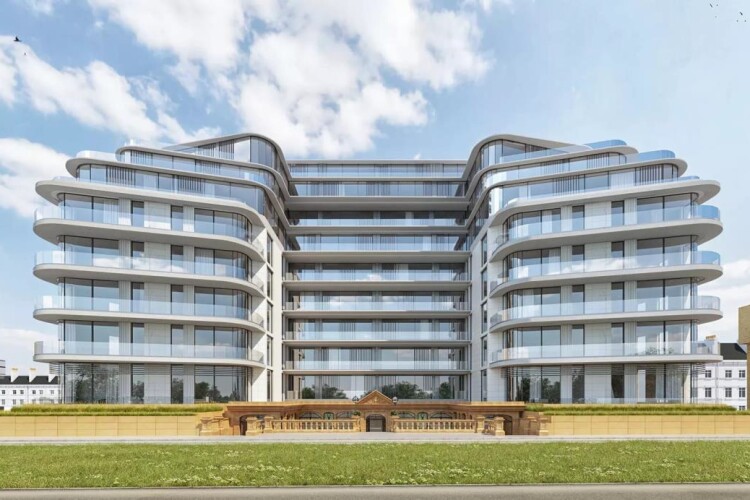With pre-commencement approvals now in place, work can begin.
Built in 1902, the Leas Pavilion has operated as a tea room, theatre, cinema, bowling alley, snooker hall and nightclub. Since its closure in 2007, the building has fallen into disrepair.
The refurbished Leas Pavilion will be a nine-storey, glass-fronted residential block with 91 sea view apartments for private sale.
Folkestone & Hythe-based architect Hollaway has worked alongside Gustavia to redevelop the site while retaining the pavilion. The restoration will include the removal, replenishment and reassembly of a number of the building’s historical elements to match the pavilion’s original interior and exterior aesthetic.
Gustavia’s appointed contractor, Ant Yapi UK, is scheduled to start work this month to safeguard heritage artefacts ahead of the building’s structural safety programme.

Selahattin Yalcin, development director at Gustavia, which is leading the development, said: “We are delighted to receive final pre-commencement permissions for this incredibly exciting project for Folkestone. It’s taken 18 months of hard work to get to this stage. Every step we’ve taken has been in conjunction with the relevant council authorities and our appointed architect Hollaway, structural engineer Manhire, and services engineer Hoare Lea.”
He added: “Leas Pavilion has long been known as one of the town’s oldest jewels. We cannot wait to polish that jewel and present it to the community.”
Preservation work will initially focus on the pavilion’s terracotta outer façade, with each stone removed and transported off-site for cleaning and refurbishment. The iron gate and stained-glass windows that form part of the pavilion’s entrance will also be restored in the same way. Where original features cannot be removed, moulds and samples will be taken of ceilings, walls, and arches around column crowns to recreate original interior designs.
“We will restore the pavilion according to the heritage planning conditions which require to salvage as many of the its original features,” Selahattin Yalcin said. “In essence, historical elements that are going to be retained as original will be removed to keep them damage-free during main building works.”
Got a story? Email news@theconstructionindex.co.uk




